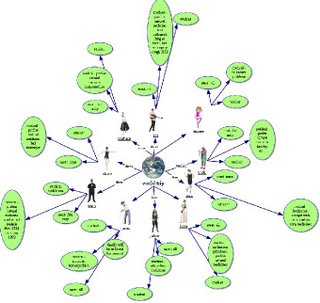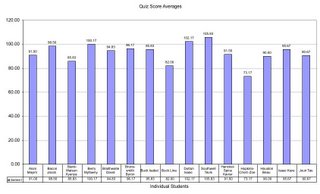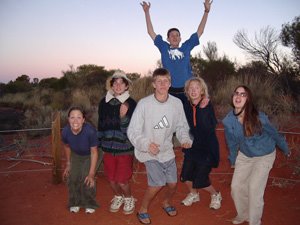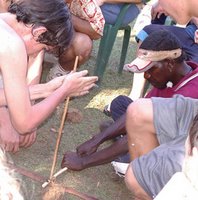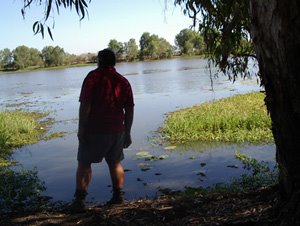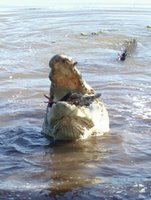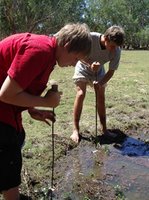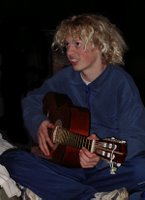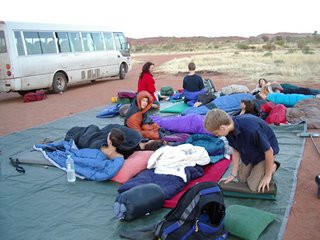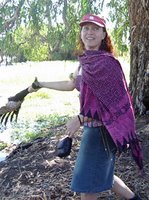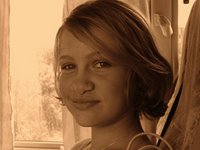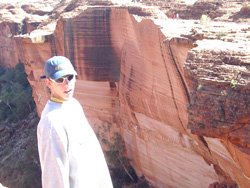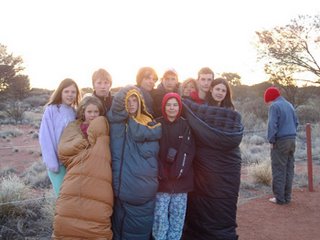 ASSIMILATION....
ASSIMILATION....
ADAPTATION....
EQUILIBRATION....
Constructivist
Theory of Education
Jean Piaget 1896-1980
- Sensorimotor stage (birth - 2 years old)--The child, through physical interaction with his or her environment, builds a set of concepts about reality and how it works. This is the stage where a child does not know that physical objects remain in existence even when out of sight (object permanance).
- Preoperational stage (ages 2-7)--The child is not yet able to conceptualize abstractly and needs concrete physical situations.
- Concrete operations (ages 7-11)--As physical experience accumulates, the child starts to conceptualize, creating logical structures that explain his or her physical experiences. Abstract problem solving is also possible at this stage. For example, arithmetic equations can be solved with numbers, not just with objects.
- Formal operations (beginning at ages 11-15)--By this point, the child's cognitive structures are like those of an adult and include conceptual reasoning.
Looking at Piaget’s four stages of development and how a child moves through them has given clear indications that a child has an experience of his or her environment based on existing constructs that they have formed from past experiences. If the new information is assimilated easily the child maintains a state of mental equilibrium, if not, the child alters their present cognitive structure moving through a stage of disequilibrium to accommodate the new experience. Equilibrium is regained and a more complex level of cognitive development has been reached. Piaget’s research indicates that a child cannot undertake certain tasks until they are psychologically mature enough to do so.
Lev Vygotsky 1896-1934 "The child begins to perceive the world not only through its eyes but also through its speech.
And later it is not just seeing but acting that becomes informed by words. "
"Thought is not merely expressed in words; it comes into existence through them. "
'A word devoid of thought is a dead thing, and a thought unembodied in words remains a shadow."
"A word is a microcosm of human consciousness.
Vygotsky's Central question:
How do humans, in their short life trajectory, advance so far beyond their initial biological endowment and in such diverse directions?
Vygotsky’s theory differentiated between our higher and lower mental function stating that “humans have the capacity to continue to develop intelligence” and that it is through social and cultural interaction, that our higher mental function is developed. Our lower mental functions are of genetic inheritance and as such are innate mental abilities.There are many interpretations of what constructivist education is but one common thread is that “development of understanding requires that the learner actively engages in creating meaning .
(The Impact of Constructivism on Education).
Thus, constructivists shift the focus from
"knowledge as a product to knowing as a process.”
Constructivist education is inclusive of both Piaget and Vygotsky’s theories. The Stages of Development are reflected in the structuring of classrooms from pre-school through to senior school. This is predominately through biological development and chronological age, and the curriculum and syllabus documents are indicative of natural/normal biological developmental expectations. Constructivism then goes on to embrace the creative reality of humans and recognises the cognitive and social learning processes.
This is suggestive of Vygotsky’s theory that “
Cognitive skills and patterns of thinking are not primarily determined by innate factors, but are the products of the activities practiced in the social institutions of the culture in which the individual grows up. Consequently, the history of the society in which a child is reared and the child's personal history are crucial determinants of the way in which that individual will think.In constructivist education, it is also recognised that supporting the biological development of a child by providing scaffolding within a safe learning environment, and challenging the students abilities with new experiences therefore driving them into their ZPD to form new concepts via assimilation, accommodation and equilibration, the skills attained will exceed what could have been achieved alone. This is a direct indication of Vygotsky’s. His recognition of the Zone of Proximal Development and the importance of the students interaction with people in their environment to awaken their internal developmental processes as an essential feature of learning is reflected in the classrooms of today. Whether it be teacher, parent or a peer of the student who has previously mastered the particular function, the student requires the assistance of someone else, to support in this knowledge scaffolding process, to link new ideas with existing knowledge to form new and more complex mental constructs.
It is important to mention von Glassersfeld's concept of viability.......
........... 'It is through checking out our understandings and perspectives with others that we develop a sense of the viability of ideas. This process of idea testing can be seen in the classroom of teachers who value students' ideas and promote the process of critical thinking.'
In “The Learning Revolution” (pg 133 chpt 3), Jeannette Vos
“The more you link the more you learn”. …the brain stores information by making great use of associations. Every person’s brain has an association cortex. It can link up like with like, from different memory banks”
 .....whichever association method is used, if we can add humour and emotion there is a greater chance of the information being transfered to our long term memory, because the filter in the brain that transfers information to our L.T.M. is closely linked with the brains emotional centre. Linking associations with as many senses as possible seems to help L.T.M: sight smell sound touch taste.
.....whichever association method is used, if we can add humour and emotion there is a greater chance of the information being transfered to our long term memory, because the filter in the brain that transfers information to our L.T.M. is closely linked with the brains emotional centre. Linking associations with as many senses as possible seems to help L.T.M: sight smell sound touch taste.

With the advent of the computer age, the multiple links now simultaneously available via the slipstream of information technology and the speed and ease with which students are able to interface with it blurs the lines of student/teacher roles. Instead, this is one of the emerging areas where students are the facilitators of technological skills exchange. The constructivist view of education is moving further away from an instructivist model where the teacher was the sole educator in a classroom The teacher is moving more towards the role of facilitator, providing the appropriate scaffolding for learning, constructing rubrics as an indicator of success and encouraging and supporting social and collaborative interaction. The understanding that everyone has unique, innate gifts, talents and perspectives to offer and by providing a safe, relaxed yet stimulating learning environment, the teacher/facilitator is able to achieve a higher standard of learning within the classroom. A safe, relaxed, inclusive, empowering and stimulating learning environment, where analysis, critical reflection and creativity is common practice is much more conducive to learning.
On pg 133 and 171 0f The Learning Revolution, fear is recognised as a precursor of the ‘blotting out our memory banks’. With fear, adrenaline is released into the body and the brain ‘downshifts’ into a primitive survival mode. It is when our brainwaves are in an alpha and theta pattern, characterised by feelings of relaxation, concentrated alertness and well-being that great feats of super memory and heightened powers of concentration and creativity are achieved.
Thus, supporting the picture of the emerging ‘ideal learning environment’,
recognition of developmental stages of a child,
the importance of social interaction for learning
and
the scaffolding to facilitate this learning, including information and social/environmental constructs do provide the underpinning of constructivist education and highlight the importance of the marriage of Piaget and Vygotsky’s theories.




